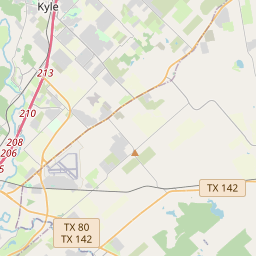First Presbyterian Church of Lockhart







In 1849, Rev. N. P. Charlot appointed D. M. Morris and Col. John T. Storey as elders of first Presbyterian Church, which organized with ten members. Early services were held in members’ homes and the masonic hall before church elders bought this site in 1854. A concrete church building was completed the next year. An 1879 cyclone destroyed that building, replaced by another in 1880 and the current sanctuary in 1914. Long-serving pastors include R. A. Mccurdy (1911-23) and Dr. Samuel L. Joekel (1930-54). The Presbyterian Life Center hosts church events and community activities. Today, one of the oldest churches in the city continues to aid its neighbors and the world through service and outreach
As one of the most visible programs of the Texas Historical Commission (THC), historical markers commemorate diverse topics in Texas history, including: the history and architecture of houses, commercial and public buildings, religious congregations, and military sites; events that changed the course of local and state history; and individuals who have made lasting contributions to the state, community organizations, and businesses.
The Johnson Space Center, located in Houston, played a crucial role in the development of the U.S. space program. It was here that NASA trained its astronauts and mission control teams, and it continues to be an important center for space research and exploration today.
In 1834, Mexican impresario, Green DeWitt, received a land grant from the Mexican government and began attracting American settlers to the area. The town of Lockhart, named after James W. Lockhart, one of DeWitt's surveyors, was established in 1838 and became the county seat in 1848. The county was officially organized the following year.
During the Civil War, Caldwell County, like much of Texas, was divided in its loyalties. Many residents sided with the Confederacy and fought in the war, while others were Union sympathizers. The conflict left deep scars on the county, but it managed to recover and thrive in the post-war years.
Throughout the late 19th and early 20th centuries, Caldwell County's economy was primarily agricultural, with cotton being a major crop. The arrival of the railroad in the late 1800s boosted economic growth and allowed for easier transportation of goods. Over time, the county diversified its economy, with industries such as oil and gas, cattle ranching, and manufacturing becoming prominent.
Today, Caldwell County is known for its historic charm, scenic beauty, and a strong sense of community. It is home to several notable landmarks, including the Caldwell County Courthouse, which is listed on the National Register of Historic Places. The county continues to evolve and adapt, while also preserving its rich history and heritage.
Caldwell County Timeline
This timeline provides a glimpse into the major events and milestones that have shaped the history of Caldwell County, Texas.
- 1848 - The Republic of Texas holds a land lottery and grants land in the area to settlers.
- 1849 - Caldwell County is officially established.
- 1852 - The county seat is named Lockhart.
- 1876 - The first courthouse in Lockhart is built.
- 1887 - The discovery of oil in the county brings prosperity.
- 1922 - The current Caldwell County Courthouse is constructed.
- 1948 - The Chisholm Trail Museum is established in Lockhart.
- 1984 - The Circuit of the Americas racetrack is built in the county.